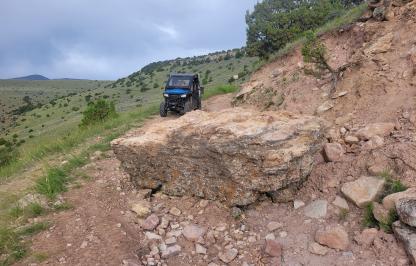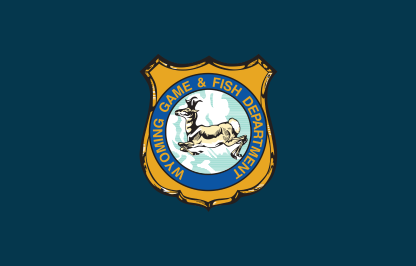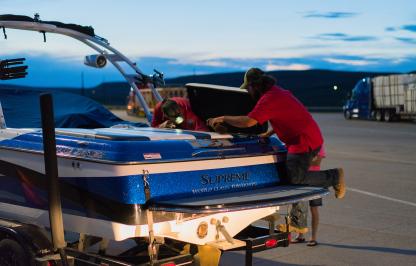New Zealand mudsnails have been found in Alsop Lake. New Zealand mudsnails are an aquatic invasive species (AIS) of concern in Wyoming, with the ability to clone and reach astounding densities as high as 300,000 snails per square meter.
The emerging population of New Zealand mudsnails in Alsop Lake was detected and reported by a Laramie resident. Jenny Loveridge has been snorkeling in Alsop Lake since she moved to Laramie 16 years ago. Her attention was grabbed this year by tiny snails covering vegetation in the lake. In her years of snorkeling, she had never seen snails like that before.
“They were everywhere,” said Loveridge. “I thought, this has got to be a problem, so I reported my observation to Game and Fish.”
Based on Loveridge’s observations and subsequent surveys conducted by Game and Fish, it is believed this population became established within the last few years. While several Wyoming rivers have established New Zealand mudsnail populations, Alsop is one of only three lakes in the state to contain mudsnails. Given the unusual water chemistry of the Laramie Plains Lakes, it is difficult to predict what impacts the mudsnails may have on the lake. In some systems, mudsnails have caused changes to water chemistry and outcompeted native snails and invertebrates. These changes can have cascading effects on sportfish like trout, altering their ability to feed and grow.
How New Zealand mudsnails were introduced to Alsop Lake will likely never be known, however a likely possibility is transportation on fishing gear. Mudsnails are tiny, making them an effective “aquatic hitchhiker.” Caked mud in boots can transport mudsnails to a new location, and mudsnails can go undetected on boats or waders. Mudsnails can also hide in plant fragments attached to equipment, boats and trailers, so all plant material should be removed before traveling to a new area. New Zealand mudsnails can reproduce asexually, which means moving just one snail can result in a new population establishing. For this reason, Game and Fish continues to urge water users to clean, drain, and dry their gear.
With New Zealand mudsnails in Alsop Lake, it is critical that recreationists do not “lake hop” from Alsop to other systems. It is common for anglers to fish Alsop and the other Laramie Plains Lakes such as Diamond, Twin Buttes, Meeboer or Gelatt without cleaning their fishing equipment between lakes. Doing so without cleaning, draining, and drying gear could transport this AIS to other waters.
To successfully decontaminate gear used in New Zealand mudsnail infested waters, first use a brush to remove all plants, mud, and organic materials from the gear. Then use one of the following four options to remove any remaining mudsnails:
- Dry gear for a minimum of 10 days. New Zealand mudsnails can survive for days out of water, so reaching the 10 day mark is critical to ensure mudsnails are killed.
- Freeze gear overnight.
- Spray or soak gear in 140°F water for at least 10 minutes. Please note, exposure to these high temperatures can deteriorate some materials, such as GORE-TEX.
- Treat gear in a chemical wash. Two chemical treatments have been approved for killing New Zealand mudsnails:
- Spray gear with Formula 409 and leave spray to soak for 10 minutes. Rinse gear with clean water after treatment.
- Soak gear for 10 minutes in a mixture of Super HDQ Neutral and water. A solution of six ounces of Super HDQ Neutral for every one gallon of water should be used. Rinse gear with clean water after soaking.
Remember, after chemical treatments gear must be rinsed with clean water not from the infested water body. Rinse water should be disposed of away from water bodies to avoid environmental contamination.
If you notice these New Zealand mudsnails at any other Laramie Region waters, please take a photo and report your sighting to Game and Fish by emailing ReportAIS@wyo.gov. New Zealand mudsnails are much smaller than most of Wyoming’s native snails, less than a quarter inch in size. They can also be identified by their 5-6 shell whorls (bumps on the spiraling shell). Identifying New Zealand mudsnails present in other regional waters will be critical to slowing their spread.



